 ™
™TRADITIONAL MOUNTAINEERING
™
www.TraditionalMountaineering.org
™ and also
www.AlpineMountaineering.org
™
 ™
™
FREE BASIC TO ADVANCED
ALPINE MOUNTAIN CLIMBING INSTRUCTION™
Home
| Information
| Photos
| Calendar
| News
| Seminars
| Experiences
| Questions
| Updates
| Books
| Conditions
| Links
| Search
![]()
Traditional snow
climbing training
At the "half crevasse" at Oregon's Mt. Bachelor ski resort parking lot
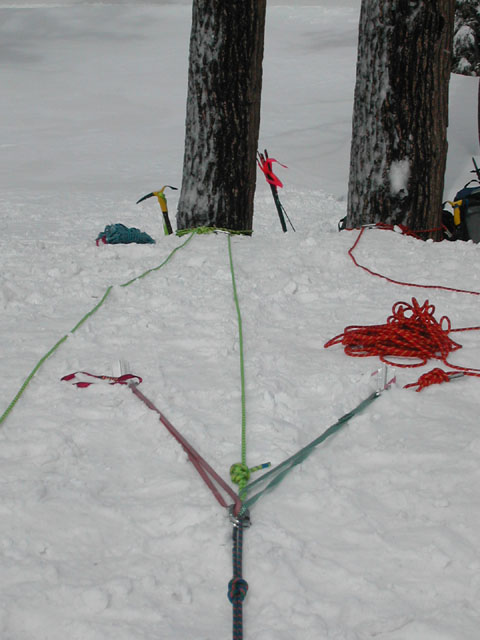
A simple SERENE snow anchor using equalized and redundant secure
pickets backed up for this training practice by a SAR "BFA", in this
case a good Ponderosa pine, using a SAR "perfect hitch". There are no extensions
in this anchor system. The rappel rope has been clipped into two locking carabiners
with a figure eight at the mid point for this seminar, not realistic because the
rappel rope is meant to be recovered by pulling on one side. The red rope will
be used as a belay. It was not necessary to tie it into the BFA. The wands will
be used to mark the edge of the snow "cliff" for wandering students.
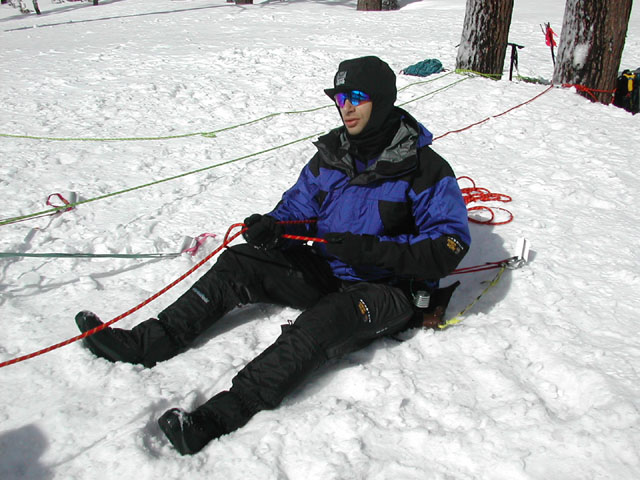
The belayer has dug in his feet and butt into the snow. This
sitting snow belay would be adequate to hold the slip of a heavy companion, but perhaps
not a leader fall. The belay position has been backed up for training by a third
picket. Of course, it is tied in to the front of the harness on the side of the
belay rope to the down climber. Note the insulating butt pad, tied to the anchor with the
yellow leash. The red rappel rope has been arranged for last-in first-out
deployment. Note the 12" runners clipped to the top of each picket to keep
them from being lost in the drifting snow.

Note the rappel rope attached to the harness by the larger
locking biner through the friction device and held by the dominant hand across
the thigh at the butt. The self belay prussic and the back-up belay rope for
training, are clipped into a second smaller locker. The feeling hand (waving
hand) is guiding the prussic down the rappel rope with the edge of the hand. The
feeling hand is not grasping the prussic knot, a common error which prevents the
prussic from tightening on the rope.
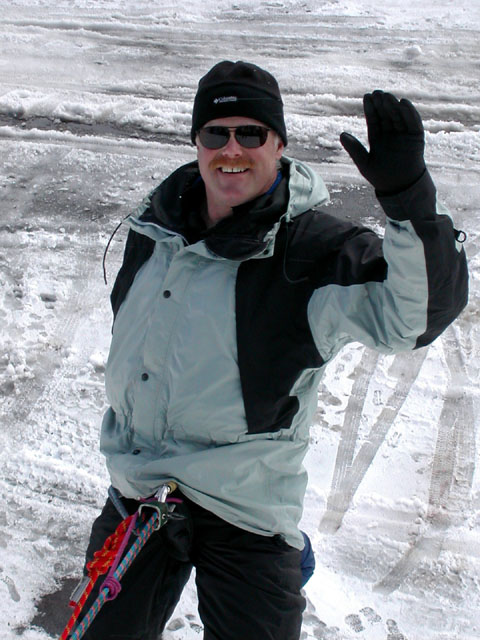
The mandatory training wave before descending to the parking lot
five stories below. The self belay is set up. The training belay is to tight.
The training includes escaping a stuck self belay prussic in mid-rappel

The traditional instructor being helpful but not managing his own
traditional belay tether which keeps him from toppling over the edge.

Mandatory hands on check of the climber's harness to make sure it
is woven back through the buckle.
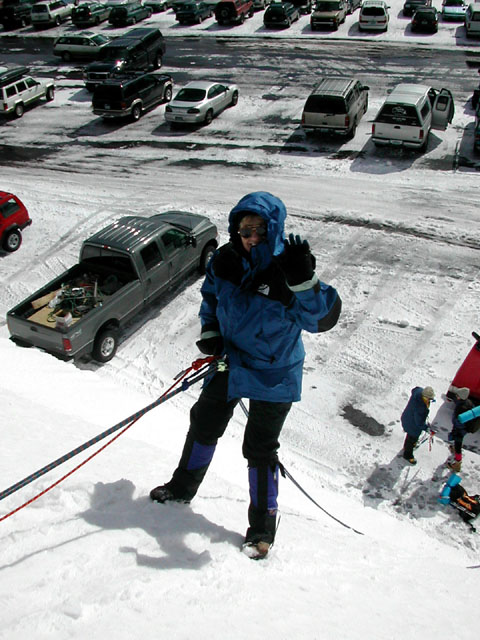
The mandatory rappel training wave!
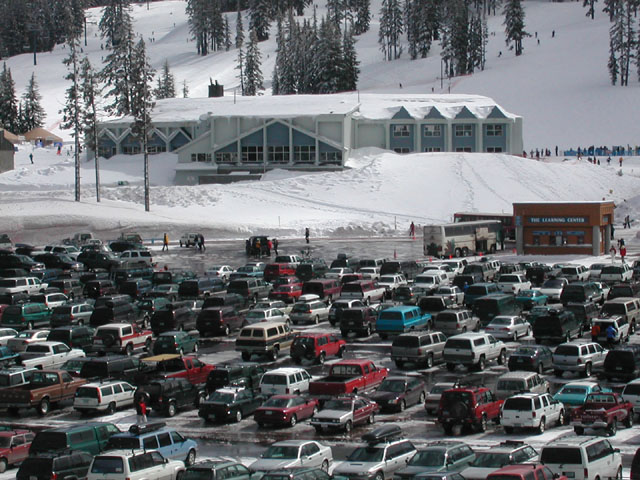
Central Oregon's Mt. Bachelor Ski and Summer Resort. The vast
parking lot is cleared of as much as twelve feet of snow during the winter and
much of the snow is piled on the north side of the lot, creating a near vertical
wall of consolidated snow more than 40 feet high. Mt. Bachelor and the Forest
Service have allowed us to conduct our free training here for the past six
years, and we thank them very much!
Copyright© 2005 by Robert Speik. All Rights Reserved.
![]()
Read more . . .
TraditionalMountaineering FREE Seminars:
Traditional self belay and ice axe
arrest training
Photos of ice axe
self belay and self arrest training
Snow anchors and
rappelling a steep snow slope
Glacier Travel and Crevasse Rescue seminar prospectus
Glacier Travel and Crevasse Rescue seminar
prospectus
Climbing and descending steep snow slopes
Snow Climbing Training
six pdf pages
![]()
What do you carry in your winter day pack?
What is the best traditional alpine harness?
What do you rack on your harness?
What is the best belay | autoblock | rappel
device?
How do you self belay a rappel
About Alpine Mountaineering:
The Sport of Alpine Mountaineering
Climbing Together
Following the Leader
The Mountaineers' Rope
Basic Responsibilities
The Ten Essentials
About our World Wide Website:
Information
Mission
![]()
Subscription
Form I am still pondering this. Hmmm.
Our
Gear Discounts Don't miss this!
Please Read Me
Awards, pdf, affiliations, donations and more